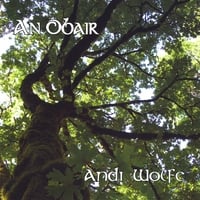A little less than two months ago, I walked into a used camera store to support Steve in his search for a 35 mm rangefinder film camera. I walked out with a Yashica Mat 124-G Twin Lens Reflex (TLR) camera (Steve did get his camera, too, which he broke on one of its first outings). The TLR is a medium format film camera, and I've been experimenting with different brands and ASA ratings of film. I think I'm done with the film trials and will settle on just a few favorites: Tri-X 400, Ilford HP5 400, Ilford FP4 125, and Fuji Neopan Across 100. I also like the TMAX films, but these others edge it out by a slight margin.
I'm really enjoying the challenge of film. There is no instant gratification with this medium. I have twelve shots per roll of film. It takes me a couple of minutes to change a roll. With the price of film somewhere between $4.50 – $7.00 per roll, each click of the shutter costs some money. What this translates into is that I really think about each photo before clicking the shutter. I check all my settings: ASA, f-stop, shutter speed, and light meter, plus really spend the time to carefully compose the shot. This process of slowing down and putting real thought into my work has helped me develop my skills as a photographer. I'm spending more time "seeing" the world, as compared to just simply "looking" at the world.
With digital photography, we often get into the habit of "spray and pray." What that means is that the shutter is constantly clicking - sometimes on rapid fire - and one hopes that something in that series will turn into a good photo. After investment in gear, computers, and software, the only real cost of digital is the time invested in sorting through way too many images and having to winnow a shoot down from hundreds of files to dozens of usable images. If one is working accurately in terms of photo exposure, shutter speed, and ISO, processing time is usually minimal. But, in the "spray and pray" mode, one might be spending way too much time to salvage potentially usable photos.
Working with film has made me think more about my digital workflow, too. I'm taking fewer photos, and thinking about them more carefully as well. With digital photography, there is instant feedback in terms of examining the image on an LED screen and having the ability to check histograms as you go. With film photography, the rolls are tucked away (I number each roll in a sequence) until I get home and can develop the film. It takes about half an hour to develop each roll of film, several hours to dry the film after processing, and then another hour or so to scan each roll's worth of negatives. It's not until I see the scanned image that I know whether a shot has worked the way I intended it to, or not. I like the anticipation of waiting to see what gems are there on the roll of film. I don't think film will replace my color digital photography, but it's a path that is well worth traveling. I have been spending most of my energy on urban scenes. Downtown Columbus, Ohio has so many interesting buildings, alleys, and districts that I will be busy with this project for a very long time, I'm sure.
Here are some examples of my film photography (©2014-2015 Andi Wolfe - all rights reserved):
 |
| Fire hydrants: Fuji Neopan Across 100 film (©2014-2015 Andi Wolfe - all rights reserved) |
 |
| Columbus skyline: Ilford HP5 400 film (©2014-2015 Andi Wolfe - all rights reserved) |
 |
| High Street: Kodak TMAX 400 film (©2014-2015 Andi Wolfe - all rights reserved) |
 |
| Whetstone Park: Kodak TriX 400 film (©2014-2015 Andi Wolfe - all rights reserved) |
 |
| Wyandotte Building: Kodak TriX 400 film (©2014-2015 Andi Wolfe - all rights reserved) |
 |
| Waterman Farm: Kodak TMax 100 film (©2014-2015 Andi Wolfe - all rights reserved) |
 |
| Leveque Tower: Kodak TriX 400 film (©2014-2015 Andi Wolfe - all rights reserved) |
 |
| Greenlawn Cemetery: Kodak TriX 400 film (©2014-2015 Andi Wolfe - all rights reserved) |
 |
| Greenlawn Cemetery: Kodak TriX 400 film (©2014-2015 Andi Wolfe - all rights reserved) |
 |
| Greenlawn Cemetery: Kodak TriX 400 film (©2014-2015 Andi Wolfe - all rights reserved) |
 |
| Street photography on the Scioto Mile: Ilford FP4 125 film (©2014-2015 Andi Wolfe - all rights reserved) |
.
Purchasing: If you are interested in purchasing a print or a license for any of my images, please contact me via the information on my profile. Thanks.



































